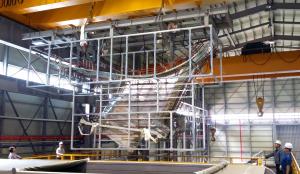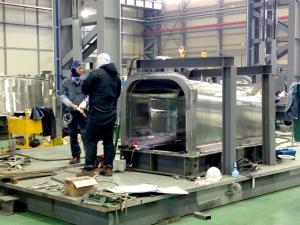The thermal shield is actually two components in one—a barrier that stands between the vacuum vessel and the magnets (called the vacuum vessel thermal shield) and another between the cryostat and the magnets (called the cryostat thermal shield). Both must be made "opaque" to thermal radiation; this is achieved by coating all thermal shield surfaces with a material that radiates as little heat is as possible.
One of most efficient "low-emissivity" materials happens to be ... silver.
"It will take some five tonnes of silver²," explains Nam Il Her, the ITER technical responsible officer for the thermal shield. "We will be depositing, by way of electroplating, a 5- to 10-micrometre-thick layer on each of the 600 parts that make up the thermal shield—a total surface of nearly 2,000 m²."
The fabrication of the thermal shield, part of Korea's contributions to the project, is underway now in Changwon at SFA Engineering Corp. The complex fabrication sequence for silver coating—requiring a succession of 11 different baths—is undergoing process qualification on real-size component mockups.
"The thermal shield is not necessarily the component that comes to mind when one thinks about ITER," says Germán Perez-Pichel, a former Monaco Fellow now working as a mechanical engineer in the ITER Vessel Section/Division. "From the outside, it just looks like panels and tubes. But dealing with such a large and heavy—yet thin—component is extremely challenging: tolerances are minimal, clearances with other systems are very tight and the silver coating has to be just perfect..."
The first thermal shield sector should be delivered to ITER in mid-2018 to be preassembled with a vacuum vessel sector and two corresponding toroidal field coils. This complex pre-assembly operation will require five to six months.
¹ Superconducting cables have negligible electrical resistance. The consequence is that no thermal losses occur when current is circulated inside the cables. When current is established in the magnets, very limited additional power supply is necessary to compensate the connection losses.
² Five tonnes of silver will be required in the electroplating baths. The mass of silver that will coat the thermal shield panels is estimated at just under 800 kg total.



